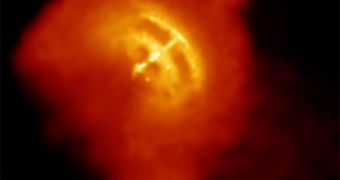A group of German investigators at the Max-Planck Institute for Extraterrestrial Physics (MPI-EP), in Garching, say that navigating through deep space requires the use of other “beacons” than stars, planets and constellations. They propose that pulsars may constitute this new generation of space beacons.
According to a presentation MPI-EP investigator Werner Becker gave at the UK-Germany National Astronomy Meeting in Manchester today, March 30, a special class of neutron stars called pulsars may be used as reference points when navigating through deep space.
Doing so would increase the odds of precise orientation, since pulsars have a few physical properties that make them extremely important to astronomers. However, it is important to first learn what they are, and how they came to be.
When massive stars die, they can turn into either a black hole (if they are very heavy) or a neutron star (if they are less massive). In the second scenario, matter is packed very tightly into the new object – about a solar mass of material fits into a star some 20 miles in diameter.
In some cases, the neutron star begins releasing radio jets. If the stellar rotation is oriented towards Earth, we perceive these jets just as if they were the beams of a lighthouse. For all intents and purposes, the object seems to pulsate, hence the name.
What Becker and the German group did was develop a space navigation system that is based on the regular X-ray emissions coming from pulsars. The reason this is such a good idea is that neutron star radiation pulses are spread apart extremely evenly.
In fact, researchers say that pulsars are the natural atomic clocks of the Universe, meaning that they can be used similarly to how Global Positioning System (GPS) satellites around Earth use signals from their onboard atomic clocks.
“These X-ray beacons could augment the existing GPS/Galileo satellite navigation systems and provide autonomous navigation for interplanetary space probes and future manned missions to Mars,” the expert told attendants at the conference.
“Looking forward, it’s incredibly exciting to think that we have now the technology to chart our route to other stars and may even be able to help our descendants take their first steps into interstellar space,” he concluded, quoted by Astrobiology Magazine.

 14 DAY TRIAL //
14 DAY TRIAL //